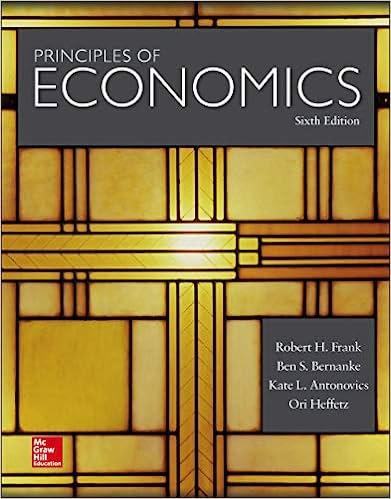Question
CASE STUDY Microsoft on Trial The US Justice Department and 20 state attorneys general filed lawsuits in May 1998 alleging that Microsoft tried to protect
CASE STUDY
Microsoft on Trial
The US Justice Department and 20 state attorneys general filed lawsuits in May 1998 alleging that Microsoft tried to protect its operating system monopoly and to extend that monopoly into Internet software. Windows software operated 90% of the nation's computers. The government charged that Microsoft's integration of its browser, Internet Explorer, into Windows 98 was not, as the company claimed, solely to make life easier for customers, but was aimed at boosting Explorer's market share. Government officials wanted Windows customers to have a choice of browsers. Microsoft disputed the charges and said the government was interfering with its right to create new products that benefit consumers. The government argued during the trial that Microsoft engaged in predatory practices aimed at winning the browser war and harming the competitors. The government, by focusing on why Microsoft did what it did and the impact on competition, was using a rule-of-reason approach. Microsoft, for its part, characterized itself as an aggressive but legal player in a fiercely competitive industry. Microsoft's lawyers said that the company would not hold such a huge market share if it failed to improve quality and value with each new version. They argued that the large market share "does not begin to reflect the intense competitive dynamic in the software industry". Even such a market share, they said, was "susceptible to rapid deterioration should the market leader fail to innovate at a rapid and competitive pace." After 78 days of testimony and months of deliberation, the judge ruled that Microsoft maintained a monopoly in operating-system software by anticompetitive means and attempted to monopolize the browser market by unlawfully "tying" Internet Explorer with Windows. Microsoft appealed the ruling but eventually reached an out-of-court settlement with the Justice Department and with most of the state attorneys general. The settlement gave personal - computer makers greater freedom to install non-Microsoft software on new machines. It also banned retaliation against companies that take advantage of these freedoms, prohibited exclusive contracts, and required Microsoft to disclose design information to hardware and software makers so they can build competing products that run smoothly with Windows. The court approved this settlement. It was not until 2009, eleven years after the lawsuits began, that Microsoft settled suits with all states and the District of Columbia. Across the Atlantic, Microsoft had to defend itself against antitrust charges brought by the European Union. After years of litigation and fines topping $2 billion, the company settled most charges there by 2012. Windows software still operates 90% of the world's computers, and Microsoft remains a powerful company, with a stock market value of about $333 billion in April 2015. When the U.S. antitrust suits were filed in 1998, MIcrosoft had a market value six times that of Apple. In April 2015, however, Apple was worth more than twice as much as Microsoft and was the most valuable company in the world. And Google, which in 1998 was still six years away from even becoming a publicly traded company, was by April 2015 worth more than Microsoft. While Microsoft officials were tied down for more than a decade by antitrust suits here and abroad, the technology world changed around them. For example, Google's Chrome now tops Microsoft's Internet Explorer as the dominant web browser. And Microsoft's search engine BIng, proved disappointing, as did its MSN web portal. Because of these slips, the company in July 2012 reported its first quarterly loss in its 26-year history.
1. What was the government's argument in the Microsoft trial and what was the company's defense? Which side prevailed? Explain your answer.
2. Identify the type of anticompetitive behavior illustrated by each of the following:
Tying contract
Price fixing
Interlocking directorate
Predatory pricing
Exclusive dealing
a. A producer of carbonated soft drinks sells to a retailer only if the retailer agrees not to buy from the producer's major competitor.
b. A large retailer sells merchandise below cost in certain regions to drive competitors out of business.
c. A university requires buyers of season tickets for its basketball games to buy season tickets for its football games as well.
d. Dairies that bid on contracts to supply milk to school districts collude to increase what they charge.
e. The same individual serves on the boards of directors of General Motors and Ford.
3. What is a free rider? Elaborate your answer.
4. What is the underground economy? What is the impact on the underground economy of instituting a tax on a certain productive activity?
5. What is common-pool problem? Explain your answer.
6. Fish represent a common-pool resource. Why have authorities found it so difficult to regulate the fishing catch in the open ocean to allow for a sustainable yield? Justify your answer
7. What does it mean to say that a common-pool resource is "overused"? Overused compared to what? Explain your answer.
Step by Step Solution
There are 3 Steps involved in it
Step: 1

Get Instant Access to Expert-Tailored Solutions
See step-by-step solutions with expert insights and AI powered tools for academic success
Step: 2

Step: 3

Ace Your Homework with AI
Get the answers you need in no time with our AI-driven, step-by-step assistance
Get Started


